Paleolithic women likely knew a lot more about loving their bodies than we do
There is something so comforting and joyous about prehistoric figurines depicting women, particularly the small, curvy ones, so welcoming in the abundance of their forms, so buttery in their hard, stone body.
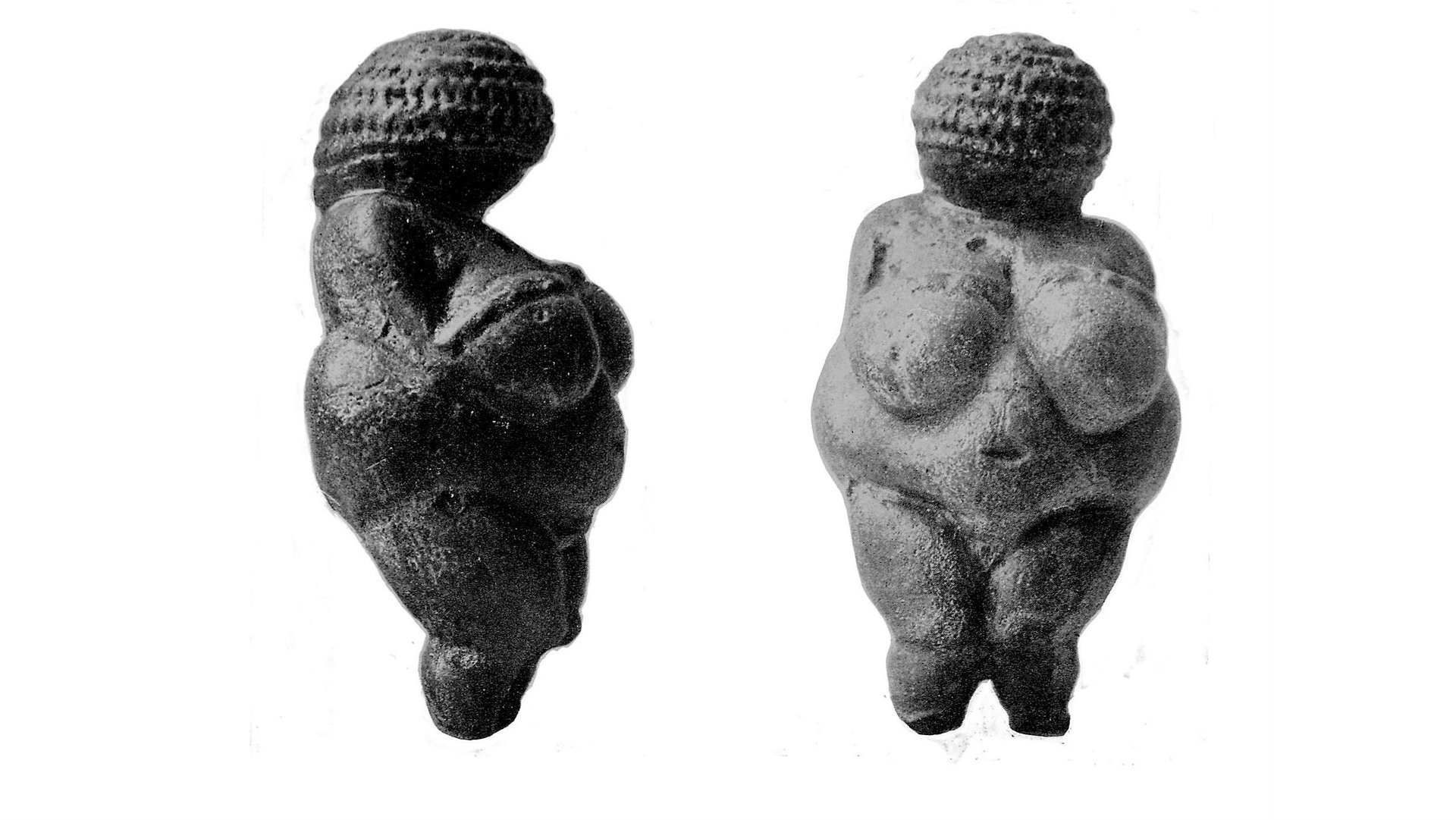

There is something so comforting and joyous about prehistoric figurines depicting women, particularly the small, curvy ones, so welcoming in the abundance of their forms, so buttery in their hard, stone body.
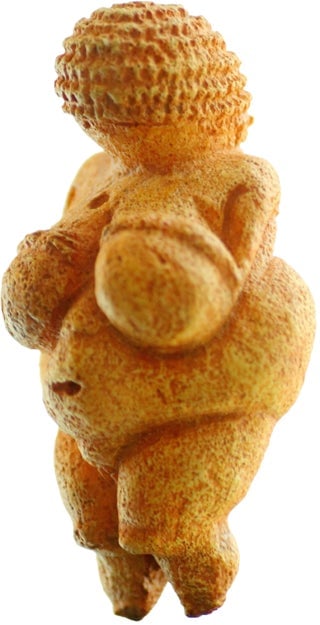
Consider the Venus of Willendorf figurine from 30,000 BC, found in Austria in the early 1900s. Unlike most artistic depictions of women, it celebrates the female body without sexualization: Here, this is a woman, it seems to say, she is soft and round, her breasts are large, her hips full, her kneecaps prominent. It’s made of limestone, but you’d be forgiven for feeling you could squeeze it—looking soft and touchable, it seems to defy the physical properties of stone.
The reason why this particular statuette, like the others of similar shape created during the Paleolithic, is known as a Venus, however, runs counter to the above: The name stands for the belief, common at the time of discovery, that this and similar images were goddesses, and that the voluptuous figures were nothing but an eroticized exaggeration of female proportions, an expression of a male, desiring gaze, revered as a divinity of fertility.
Because art was made by men. Wasn’t it?
Well, it turns out we do not know that for sure. In 1996, an article in American Anthropology entitled “Toward Decolonizing Gender: Female Vision in the Upper Paleolithic” dared to rethink that assumption—made by the men who discovered such figurines—and offered a radical alternative to the traditional understanding of the statuette.
What if, posited authors Catherine Hodge McCoid and Leroy D. McDermott, the creator of the statuette and others like it were not men but women? That was a revolutionary hypothesis. It placed the artists in a society that depicted and celebrated the female body not for erotic, male pleasure, but as something with its own intrinsic value and power.
The paper described the common features of such figurines: a faceless, usually downturned head; thin arms that either disappear under the breasts or cross over them; an abnormally thin upper torso; voluminous, pendulous breasts; large fatty buttocks and/or thighs; a prominent presumably pregnant abdomen, sometimes with a large elliptical navel coinciding with the greatest physical width of the figure; and often oddly bent, unnaturally short legs that taper to a rounded point of disproportionately small feet.
And then, it notes that though they might seem disproportionate, these traits actually are a pretty faithful reproduction of a female shape—from the perspective of the woman. To show just how logical that would be, the study compares images of the statuettes with ones of a pregnant young woman. It’s uncanny.
This, for instance, is a view of the upper body. To the left is the woman; to the right, the statuette:
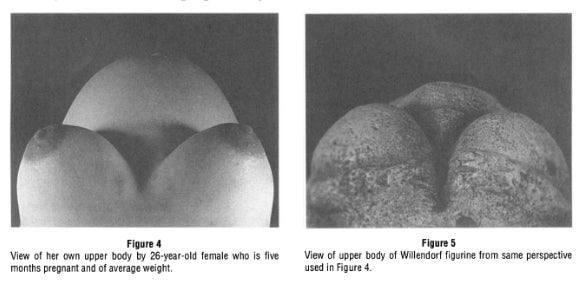
The side:
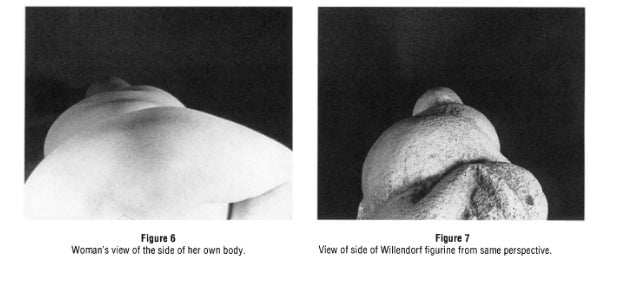
And the back:
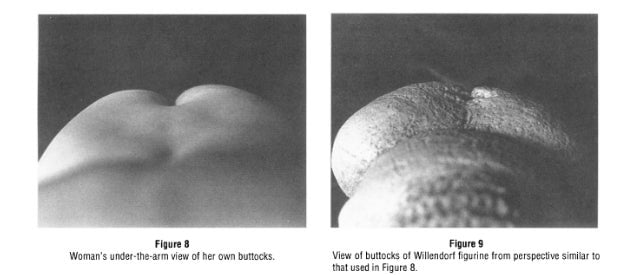
It is hard to dispute that, as a proposition, it merits consideration.
Though this is not a confirmed theory—many archeologists have criticized the authors for using as examples only the statuettes that would work with this type of analysis—it remains fascinating and, even decades after it first entered the academic debate, truly captivating.
In this change of perspective—from outside the body to inside it, from male to female—there is the introduction of something we conspicuously lack even today: The idea of a woman who, gazing down at her own pregnant figure, sees her body as a thing of true wonder, and decides to turn it into a sculpture, to reproduce and preserve its shape.
When it comes to prehistoric art—its creators, its intentions, and to a large extent the societies that created it—we know so little we even have trouble dating the artifacts. So while there is (so far, perhaps forever) no way to know whether McCoid and McDermott’s theory describes history, it seems appropriate to allow it as the possibility—a glorious one—of a time before history, in between legend and reality, when women loved their bodies with such excitement and passion that they carved them into stone, and made them immortal.